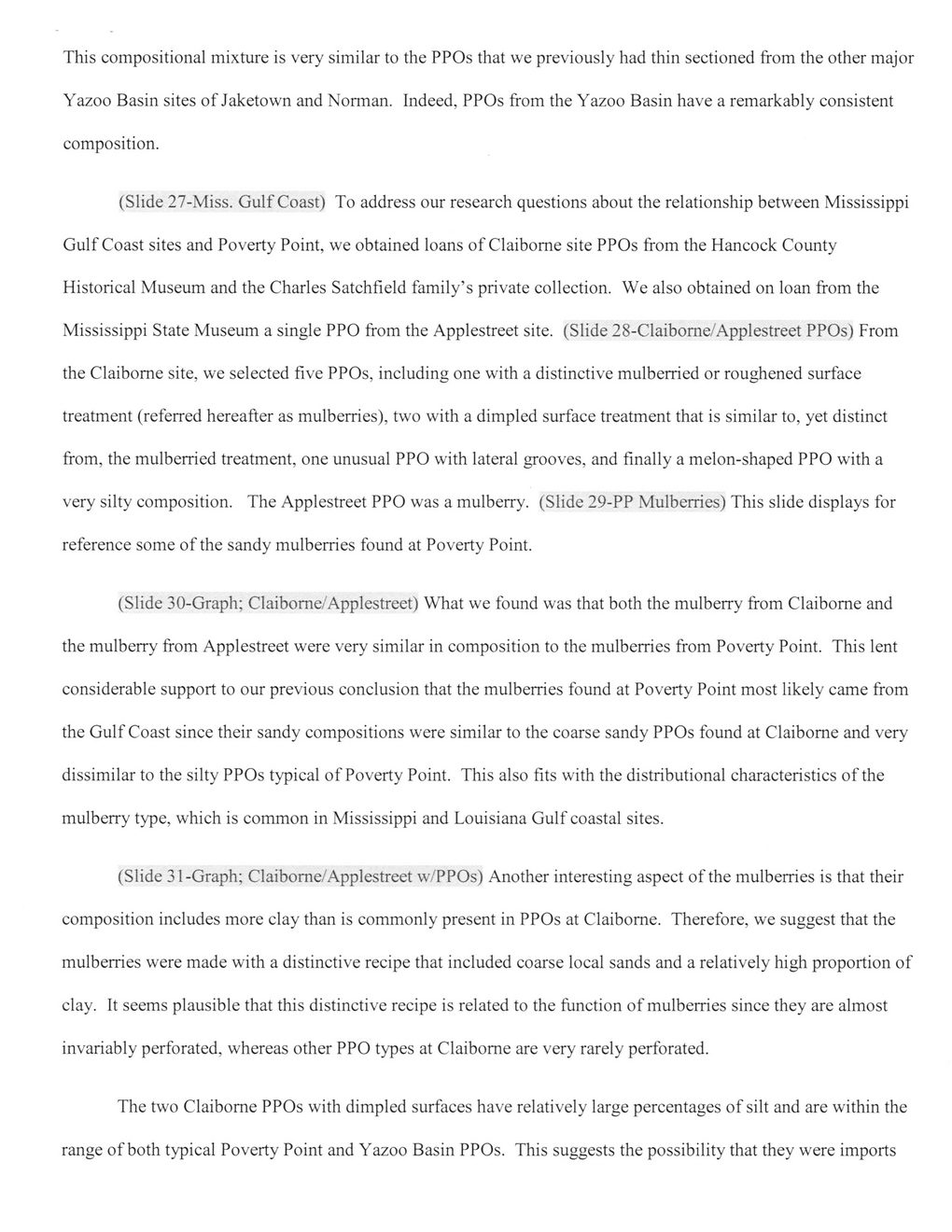This text was obtained via automated optical character recognition.
It has not been edited and may therefore contain several errors.
This compositional mixture is very similar to the PPOs that we previously had thin sectioned from the other major Yazoo Basin sites of Jaketown and Norman. Indeed, PPOs from the Yazoo Basin have a remarkably consistent composition. (Slide 27-Miss. Gulf Coast) To address our research questions about the relationship between Mississippi Gulf Coast sites and Poverty Point, we obtained loans of Claiborne site PPOs from the Hancock County Historical Museum and the Charles Satchfield family’s private collection. We also obtained on loan from the Mississippi State Museum a single PPO from the Applestreet site. (Slide 28-Claibome/Applestreet PPOs) From the Claiborne site, we selected five PPOs, including one with a distinctive mulberried or roughened surface treatment (referred hereafter as mulberries), two with a dimpled surface treatment that is similar to, yet distinct from, the mulberried treatment, one unusual PPO with lateral grooves, and finally a melon-shaped PPO with a very silty composition. The Applestreet PPO was a mulberry. (Slide 29-PP Mulberries) This slide displays for reference some of the sandy mulberries found at Poverty Point. (Slide 30-Graph; Claiborne/Applestreet) What we found was that both the mulberry from Claiborne and the mulberry from Applestreet were very similar in composition to the mulberries from Poverty Point. This lent considerable support to our previous conclusion that the mulberries found at Poverty Point most likely came from the Gulf Coast since their sandy compositions were similar to the coarse sandy PPOs found at Claiborne and very dissimilar to the silty PPOs typical of Poverty Point. This also fits with the distributional characteristics of the mulberry type, which is common in Mississippi and Louisiana Gulf coastal sites. (Slide 31-Graph; Claiborne/Applestreet w/PPOs) Another interesting aspect of the mulberries is that their composition includes more clay than is commonly present in PPOs at Claiborne. Therefore, we suggest that the mulberries were made with a distinctive recipe that included coarse local sands and a relatively high proportion of clay. It seems plausible that this distinctive recipe is related to the function of mulberries since they are almost invariably perforated, whereas other PPO types at Claiborne are very rarely perforated. The two Claiborne PPOs with dimpled surfaces have relatively large percentages of silt and are within the range of both typical Poverty Point and Yazoo Basin PPOs. This suggests the possibility that they were imports

Claiborne Historical Site Guerin-Giardino-(042)